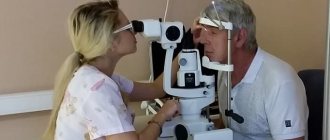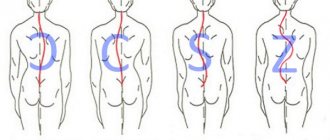The word “paranoia” in psychiatry, and in everyday life in general, has been known and used for quite some time. According to its original meaning, this concept implied any form of mental perversion, however, since the eighties, the word “paranoia” was assigned a new meaning, which remains to this day.
Paranoia these days
is a unique form of psychosis that combines illogical and even delusional ideas characteristic of mental disorders and the preservation of normal mental abilities, emotional background and thinking processes.
Symptoms of paranoia
Once they arise, illogical thoughts can be retained in the subconscious, from where it is almost impossible to eliminate them with any beliefs. In addition, they have the ability to reproduce both through logical development and through the emergence of new ideas and thoughts that appear similar to the original ones. Most of the content of their thoughts and delusions is associated with deceptions of the senses, most often with hallucinations. In most cases, the obsessive thought of paranoid people is persecution mania.
.
This is especially true for the initial stage of the disease. In later stages, megalomania
.
Paranoid personality disorder - symptoms and treatment
The need to systematize variants of the disorder more often leads to classification according to the plot of overvalued ideas: jealous people, inventors, querulants, fanatics, etc. However, this approach is quite superficial and does not allow us to understand the essence of the intrapsychic mechanisms of ongoing personal events.
At the moment, it is clinically more justified to distinguish two polar variants of paranoid RL:
- expansive shape;
- sensitive form.[9]
The expansive variant includes pathological jealous people, litigators, truth-seekers, and reformers. Being prone to lies from an early age, they are vindictive, “do not see the beam in their own eye”, they can be characterized as slanderers and complainers. They are smug and confident that their understanding of their specialty is perfect. Not wanting to obey, they strive to occupy a higher position, fighting exclusively with personal enemies. By choosing science as their activity, they pursue the same goal - to humiliate their enemies. The whole life of such individuals is a similar struggle. They are sthenic (efficient, resistant to stress) and exalted (in an inspired state). The pace of their thoughts is accelerated and their mood is elevated.
Between the exalted and sensitive poles, there are many transitional forms , for example, the “sectarians” described above by K. Schneider, who are closer to the psychopaths of the schizoid circle.[1]
The sensitive pole of paranoid disorder was first described by E. Kretschmer, and A.E. Lichko identified it as a separate type of psychopathy. Outside of decompensation (exacerbation) of the disorder, sensitive paranoids are to some extent similar to sensitive schizoids. Their characteristic feature is the combination of asthenic personality traits (fatigue and mood instability), sensitive (increased sensitivity, impressionability) and sthenic ones. They are characterized by a lack of affective discharge, which leads to stagnant affect. Therefore, they react deeply and lastingly to various kinds of conflicts.
People of the sensitive pole are rather suspicious, self-critical, timid, shy, and irritable. The big difference is the accentuated feeling of failure in the professional sphere and everyday issues. At the same time, the standards against which they evaluate themselves are set by them independently. The content of their mental life is characterized by complexes of shameful ethical insufficiency.
During the period of decompensation, the world of a sensitive paranoid seems to him to be colored by that same lingering affect. The starting points of experience are not only sexuality complexes (such as masturbation or gerontophilia), but also dissatisfaction with work (slowdown in career growth) and the family situation.[9]
During the course of the disease, two main phases :
- compensation - when the features are relatively smoothed out;
- decompensation with aggravation of interpersonal conflicts and delinquent behavior (often occurs during the period of puberty crisis - adolescence).
Stages of paranoia
Paranoia is a chronic disease in which three stages are clearly monitored:
First stage
- Preparatory stage - delirium does not yet manifest itself in the words and actions of the patient and at this stage it is almost impossible to diagnose the disease. Paranoia is revealed only in the future, and at the next stages it becomes obvious that delusional thoughts were nurtured in the patient’s mind for months - they simply did not affect his behavior and other external manifestations. Continuing, at first glance, their ordinary lives (“remaining themselves”), paranoid patients become increasingly distrustful and suspicious. They begin to notice that they are being treated “somehow differently,” their lives and dignity are in danger, they are being pursued by unknown (often fictitious) persons, and so on. Patients begin to take self-defense measures; every day they become more and more hostile towards potential “enemies” - for example, police officers, social workers, and often just all people indiscriminately.
Second stage
- The second stage of paranoia can last for many years. It is associated with the active development of delusional ideas and thoughts that arose in the first stage. This stage is the main one. The patient develops an incredibly complex picture of the world, based on delusional thoughts and hallucinations. In it, most often, the paranoid person is surrounded by all sorts of dangers - he is being watched by intelligence agents, their phones are tapped and even their thoughts are read. They see hostile faces and unpleasant scenes, they hear voices and so on. Words and thoughts are imposed on them that can compromise them and in general, in their opinion, this whole world was created to kill them, drive them to despair, suicide, and so on. Having succumbed to these ideas, patients become depressed and nervous, they are very easily angered, they become lethargic and apathetic, losing all interest in everything except their persecution mania
. They are always careful in communication so as not to inadvertently compromise themselves. Noticing that they are considered crazy, they try in every possible way to hide their worldview and isolate themselves even more from society. However, due to fear and anger, a paranoid person is capable of losing self-control and trying to harm potential perpetrators of the conspiracy, up to and including public insults and attempted murder.
Third stage
- Treatment of paranoia
The main problem in the treatment of paranoia is that patients themselves do not consider themselves sick, and therefore do not consult a specialist for a long time. In addition, paranoid people exhibit symptoms noticeable to others quite late, since the apparent adequacy persists for a long time. However, no effective method of treating paranoia has yet been developed. One possible method is chemotherapy. However, it is worth noting that the main problem in the treatment of paranoia remains the patient’s social adaptation and restoration of his trust in people.
Advantages of treating paranoia in our clinic
- Our staff have extensive experience in treating paranoia.
- We use combination therapy
. We select medications individually. We combine medications with a course of psychotherapy, physiotherapy, diet therapy, physical therapy and massage to make the treatment more effective. - We treat complex cases
. We accept patients who perceive treatment as an attempt to restrain them and control their consciousness. We relieve acute thinking disorders, after which we convince the patient of our desire to help and motivate him to agree to treatment. - We are being treated in a hospital
. We help place you in a hospital, even if the patient initially refuses to see a psychiatrist, treatment or hospitalization. We place you in general or individual wards and assign medical staff for constant monitoring. We carefully monitor the mental and physical condition of the patient. We create conditions conducive to recovery. - We provide reports to relatives
. We conduct regular classes with relatives, where we fully inform about the condition, prognosis, teach the correct behavior with the sick person and provide psychological assistance. Upon discharge, we provide a discharge summary indicating all the research results, all treatment performed, recommendations, if necessary, we write out prescriptions and provide a certificate of incapacity for work (“sick leave”). - We do not register
. We treat anonymously, do not report the patient’s place of work, and do not register with a mental health clinic. - We work around the clock .
To make an appointment for a relative with a psychiatrist, or to call a doctor at home, or to carry out hospitalization, call. You can ask your doctor questions by phone or by leaving a request.
Glossary of terms
In this section we have collected all the terms that you might encounter in this article. Gradually, we will collect from these explanations a real dictionary of a narcologist-psychiatrist. If some concepts remain unclear to you, leave your comments under the articles on our site. We will definitely help you figure it out.
Delirium (delusional syndrome)
– a mental disorder that is characterized by erroneous, completely uncontrollable judgments in the patient. These judgments are capable of being formed without any explanation, reason or appropriate conditions for this. This syndrome manifests itself in patients with schizophrenia, as well as in people suffering from diseases of the central nervous system of a vascular and atrophic nature. In addition, patients diagnosed with psychosis are also susceptible to the development of delusional syndrome.
Paranoia
is a unique form of psychosis that combines illogical and even delusional ideas characteristic of mental disorders and the preservation of normal mental abilities, emotional background and thinking processes.
Psychoses
- These are short-term, reversible mental disorders that arise in a person as a result of mental trauma. They are characterized by the severity, severity and depth of the mental harm caused. Productive and negative symptoms arise. German psychologist and psychiatrist Karl Jaspers formulated the concept that reactive psychoses occur due to a conflict between the individual and an intolerable reality. This definition was included in textbooks and, in many ways, became classic.
Reasons for development
Paranoid syndrome most often develops in people around 30 years of age. Its causes have not been fully established, and experts only put forward theories about the occurrence of the pathology. It has been proven that paranoia often has a hereditary connection.
Other factors that can affect a person’s psycho-emotional state and contribute to the development of pathology:
- Experienced violence, which often happens in childhood.
- High demands of parents towards the child and strict control on their part.
- Bad habits that weaken the nervous system.
- Conflict situations that cannot be resolved.
Paranoia can be triggered by the personality traits of a particular person. A paranoid person is always a vulnerable person with high self-esteem. The pathological condition is often diagnosed in people with developed thinking and a strong, but unbalanced character. Against the background of this combination, the following features develop:
- Mistrust.
- Despotism.
- Pedantry.
International Classification of Diseases
If you turn to the official international classification ICD-10, you will find that paranoia itself is not a disease. Only paranoid-type disorders that arise in the presence of other mental illnesses are considered. Is this the right approach? Unknown. But previously, paranoia within the framework of classical psychiatry was considered as an independent disease.
What it is
Paranoia is an instinct strongly influenced by anxiety or fear, often to the point of delusion. This fear begins with a slight feeling of discomfort, gradually progresses and reaches an anxious way of thinking. This suggests that the mental well-being of the individual is under serious threat. At the same time, the adequacy of perception and logic of thinking in areas not related to painful ideas is preserved.
The term "paranoia" when translated from Greek means madness.
Psychosis is manifested by beliefs of persecution or self-conspiracy. Aggressive impulses change and are attributed to others in a form changed beyond recognition. The disease is expressed by a general distrust of others and false accusations. For example, a paranoid person thinks that the incident happened intentionally, while most people view it as an accident or coincidence.
Paranoia borderline state
This happens to many people. Even if a person knows that their problems are not based in reality, they can be bothersome if they happen too often. But the clinical form is a more severe pathology. This is a persistent state of constant and unfounded mistrust. This is a rare form of mental health in which the sufferer believes that others are unfair, lying and trying to harm him. Such patients do not consider themselves paranoid because they are convinced that they are right.
FAQ
To study the issue in this article in more detail, it is necessary to consider the most common questions that arise in relation to paranoid disorder. Let's look at the answers to these popular questions.
What to do if paranoia strikes suddenly
When paranoia appears suddenly, the following questions need to be answered:
- Did she really appear suddenly?
- What are the causes of paranoia?
- Is this situation a transition from a mild to an acute form?
In any case, the best decision would be to consult a psychiatrist for help. It is he who will be able to accurately diagnose this disease and offer you a treatment path.
However, if by surprise you mean being discovered and somewhat surprised by it, then you can try to deal with paranoia on your own. But it is important to remember that when self-medicating, you take responsibility for the fact that the disease can be neglected.
What to do if paranoia develops in a child or teenager
In the case of children, it is most important to see a doctor immediately. Due to the fact that children and adolescents have an unstable and weak psyche, they cannot properly assess the situation. Moreover, they are unlikely to suspect they are paranoid. As a parent, you need to explain to your child that medical help is necessary. Do not pressure or threaten under any circumstances. Try to make contact, show empathy and love. You need to become a helper and protector in the eyes of your child.
Is it possible to remove the problem with medication?
Yes, medications solve problems of paranoia. This has already been discussed. However, this decision is made by the attending physician. He will write out special antipsychotics according to your prescription. Therefore, you still have to see a doctor.
There are different treatment options for paranoia
Development of paranoia
In general, we have already talked about how exactly paranoia develops. But let's list these stages again:
- The emergence of an idea;
- The idea develops into an obsessive and manic thought;
- Under its influence, thinking and perception of reality changes;
- It develops into delirium that haunts a person constantly;
- The worldview, human behavior, and character change.
What are the main ways to treat paranoia?
There are two main methods of treatment:
Medication
Therapy
The specific method of treatment is determined by the doctor. These two methods can be combined. This increases the effectiveness of treatment.
Treatment
The success of therapy depends on the type of delusional disorder. Thus, acute sensory delusions can be easily and quickly treated, while long-term interpretative delusions require close attention. As a rule, with persistent delirium, the main goal of treatment is to level the affective component - that is, reduce emotional instability, arousal, anxiety in order to prevent aggression towards strangers and oneself.
In the case of the development of delusions of persecution within the framework of schizophrenia, the main emphasis is placed on the treatment of the underlying disease (schizophrenia).
In any case, the correction of this disease is carried out by a psychiatrist, only he certainly knows how to get rid of paranoia. Treatment can be carried out either on an outpatient basis or in a hospital setting, depending on the severity of the condition.
Cost of services
| CONSULTATIONS OF SPECIALISTS | |
| Initial consultation with a psychiatrist (60 min.) | 6,000 rub. |
| Repeated consultation | 5,000 rub. |
| Consultation with a psychiatrist-narcologist (60 min.) | 5,000 rub. |
| Consultation with a psychologist | 3,500 rub. |
| Consultation with Gromova E.V. (50 minutes) | 12,000 rub. |
| PSYCHOTHERAPY | |
| Psychotherapy (session) | 7,000 rub. |
| Psychotherapy (5 sessions) | 30,000 rub. |
| Psychotherapy (10 sessions) | 60,000 rub. |
| Group psychotherapy (3-7 people) | 3,500 rub. |
| Psychotherapy session with E.V. Gromova (50 minutes) | 12,000 rub. |
This list does not contain all prices for services provided by our clinic. The full price list can be found on the “Prices” , or by calling: 8(969)060-93-93. Initial consultation is FREE!
What is the difference between paranoia and paranoid disorders?
As has already been clarified, paranoia and paranoid disorders are different diseases. What symptoms of paranoia will help distinguish it from other diseases? Here are some examples:
- With paranoia, there is one obsession and thought. For example, it seems to you that your work colleague wants to set you up. Therefore, all working moments are accompanied by this single thought. When you are upset, it seems that all the people around you want to set you up and deceive you. That is, there is a large-scale manifestation of the disease;
- The paranoia itself is very logical and consistent. That is, the patient builds a fairly reasoned sequence and cause-and-effect relationships between the delusional idea and the surrounding circumstances. Delusional disorders have no logic and no relationship with events;
- Paranoia does not imply the occurrence of any hallucinations or real distortions of reality. In disorders, delusions and hallucinations are observed together.
A little history and interesting facts
Translated from ancient Greek, “paranoia” is translated as “out of mind.” It was mainly German psychiatrists who studied paranoia, starting in the 17th century. In German scientific literature, delusions of persecution were called the term Verriicktheit.
Photo: https://www.flickr.com/photos/duststorm/327885448/
Among Russian scientists, Kraepelin studied paranoia.
Various variants of delusional disorder are interesting, such as:
- Capgras syndrome, or double syndrome - when, in addition to anxiety and the main plot of delirium, there is a conviction that among the people around him there are hidden doubles of the patient’s pursuers, whom he is diligently trying to detect;
- Fregali syndrome - this syndrome is characterized by the belief that the patient’s pursuers change their appearance; the paranoid person tries to recognize them among the people around him.








